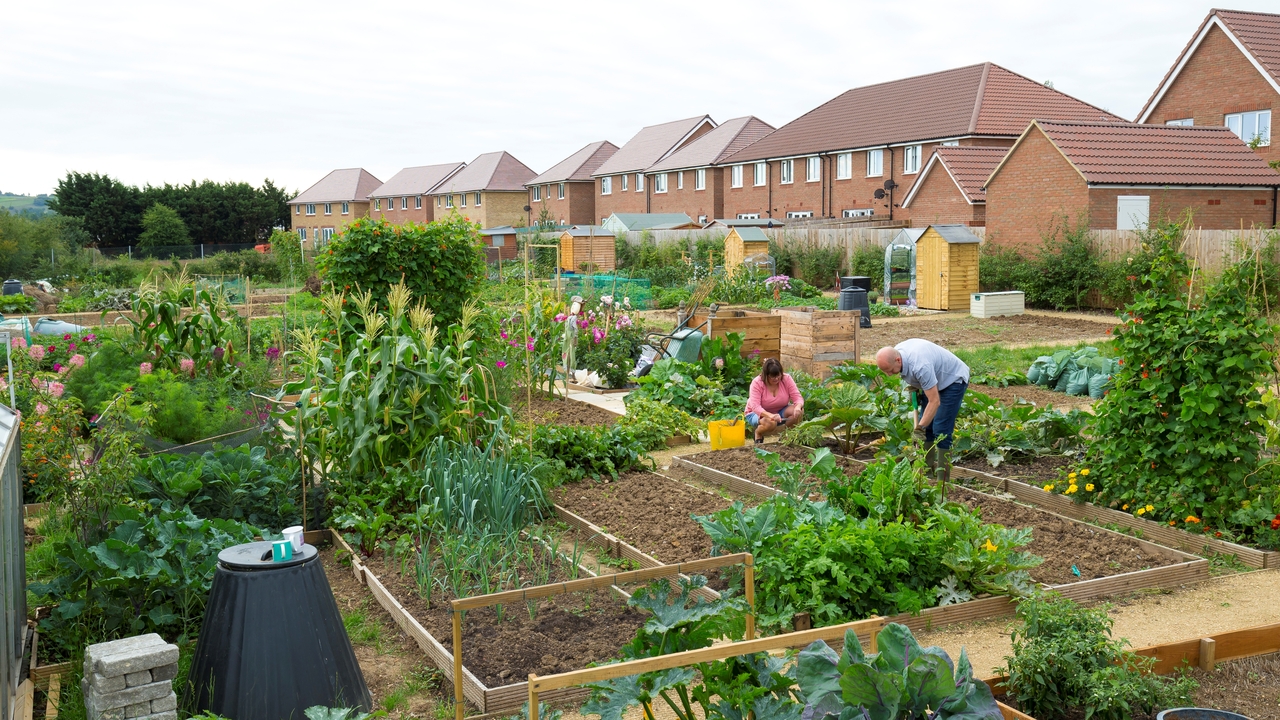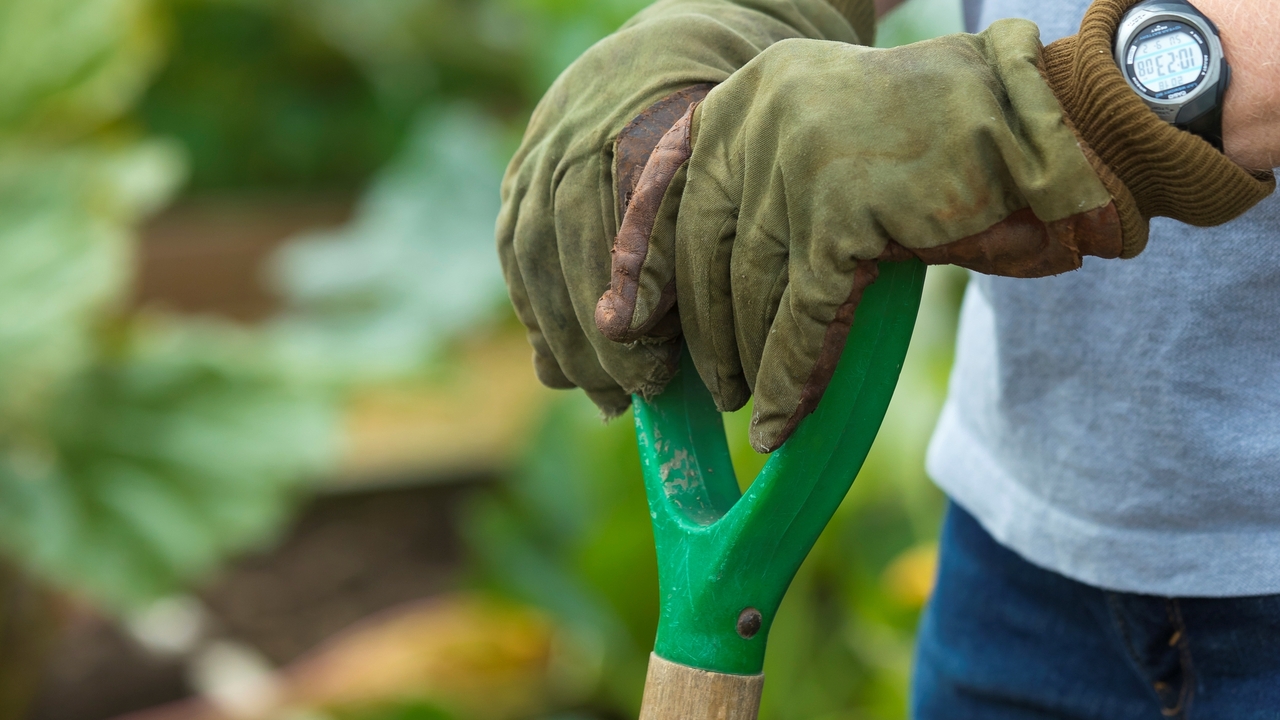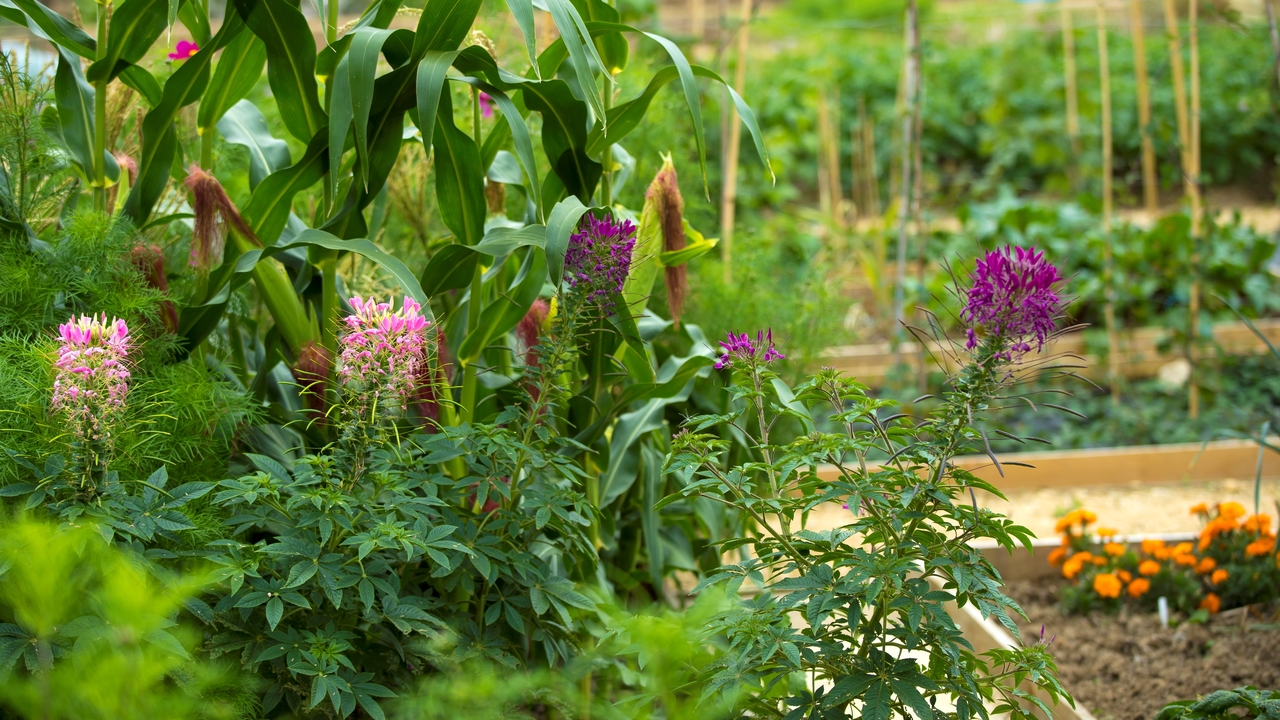Allotments are now included at many of our new developments for all these reasons. So, below, we explore what an allotment is, what you can grow, and the benefits of owning one!
What is an allotment?
An allotment is a piece of land used for growing your own fruits and vegetables. Many allotment-holders like to grow a few flowers too, especially those which attract pollinators. This is because to successfully produce fruit, flowers need to be pollinated and the most natural way to do this is with a little help from our flying insect friends, such as honeybees and bumblebees.
“We are finding allotments are increasingly in demand as people become more aware of the benefits of growing their own produce,” said Rose Sandell, Group Communities Director at Redrow. “The local authorities we work with at the planning stage to deliver new communities are flagging them more frequently as a key feature people would like to see delivered alongside new homes.”
Usually, you will lease your allotment either from a private or council landlord. You may also be able to use your allotment plot to keep livestock, like hens and bees, although it can vary from place to place as to what’s allowed.

How big is an allotment plot?
Traditionally, allotments are measured in rods (perches or poles), a system which dates back more than 1,000 years, to Anglo-Saxon farming practices. A rod equates to 5.5 yards or just over 5 metres. So, for example, a 10 square rod plot translates to approximately 302.5 sq yards or 253 sq metres.
How do you apply for an allotment?
In some areas, allotments are in high demand so it can take a little time to have one allocated to you, and you may need to add your name to a waiting list.
The best place to start is by contacting your local authority, who can provide you with a directory of local allotments. If you find one that suits, you can then make an application to request a plot. The government website also has an allotment search facility or ask your sales consultant when you reserve your Redrow home if your development will feature allotments.
Some allotment sites are provided by private landlords, including organisations like the Church of England or private management companies.
If there are no allotments in your area, The National Allotment Society (NAS) suggests you try and find five like-minded people who would also like to set up an allotment with you. You can then approach the local council to create one. Local authorities have a duty to provide allotments where there is enough demand. However, they are not bound to do this within a set time limit, and it only applies outside London. It’s also worth noting you must all be on the electoral roll or registered council taxpayers to make a request.
How do you start an allotment?
When you first get your plot, consider whether it gets plenty of sun or is it shaded by trees? Does it have a shed and nearby access to water? If not, it’s worth asking if there is another available – ideally with plenty of light to grow sun-loving crops and easy access to a tap for fresh water when needed. In order to conserve the water supply, it’s well worth purchasing a water butt to harvest rainwater. It’s best to start clearing it as soon as possible. The ideal time to clear the ground is autumn and winter when plants are likely to be dormant. This is also a good time to remove any weeds before they start flourishing again in spring.
Then, dig the soil and remove weed roots, decide whether you want raised beds or to grow crops directly in the ground, add compost or manure to increase nutrients, and start planting. Growing your own fruit and veg doesn’t require too much more resource than what is needed for the herbs. You just need a nice patch of garden, some good compost, a few gardening tools, water, seeds and sunlight and you will be ready to go.

What can I grow in a allotment?
Vegetables, fruit and herbs are the most commonly grown produce. There is plenty of choice out there for what you can grow yourself so you can pick based on your favourite recipes, the size and space available or even the flowers they grow. You may even want to choose based on your gardening expertise, so if you are a beginner there are plenty of hardier choices to make the process a little easier.
If you’re aiming to be self-sufficient in your food production, then high-yield crops like root vegetables are a great place to start and grow well in our climate.
Leafy salads and greens will yield lots of produce, and on a regular basis, compared with plants that need to ‘head’ before you can eat them, like lettuces or cauliflower.
If you choose to grow things like peppers and cucumbers, just be aware you’ll only have a brief window in late summer in which to enjoy them when they’re fresh. Or why not do some batch cooking and freezing/pickling at home to make them last longer once they’re picked? Variety is the key and mixing your plants to ensure you have something you can harvest in each season.
Soft, woodland fruits like redcurrants, raspberries, blackcurrants and gooseberries can grow in shadier areas. As can beetroot, chard, kale and lettuce (it’s a good idea to start them off in brighter conditions and transplant them later).
Tomatoes, peppers and cucumbers, meanwhile, are warm-weather plants, as are corn, melons and pumpkins.
Most staff at local garden centres are very helpful and will be happy to advise you on your allotment aspirations.

What are the benefits of an allotment?
Allotments encourage people to spend time outdoors, immersed in nature and fresh air, which has lots of benefits for our health and wellbeing, including our mental health. That’s why at our developments you’ll get all the benefits of nature on your doorstep - through gardens and green spaces alike.
Allotments also promote a more nutritious diet, thanks to all the lovely homegrown organic fruit and vegetables you will enjoy. And, let’s be honest, everything tastes so much better when you’ve grown it yourself.
Contact the team at your chosen Redrow development to learn more about allotments and local green spaces.
Discover what to plant when and how to make sure your outdoor area looks gorgeous all year long with our season-by-season gardening guide.



